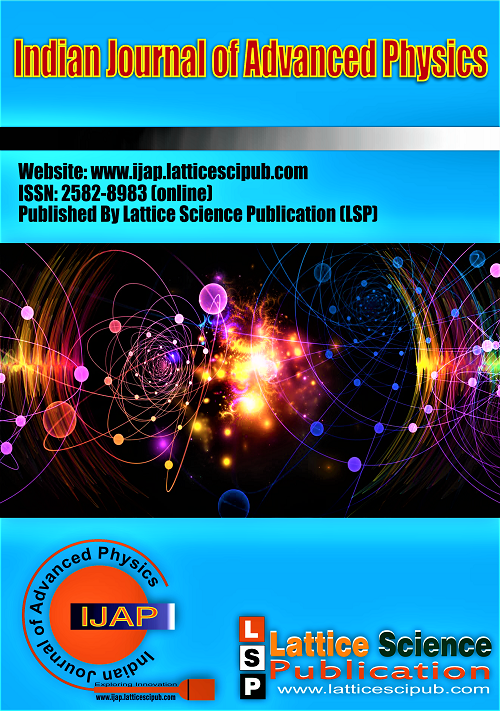Introduction to Universal Law to Provide Reasons for the Birth and Working of the Universe
Main Article Content
Abstract
The universe is governed by one Universal Law that holds true in all circumstances and in all parts of it. This Universal Law is the reason for the presence of gravitational forces, the expansion of the universe, the existence of Black holes, the existence of forces in nature, Etc. The Universal Law can be used as the basis for reasoning for the entire unanswered phenomenon in space. However, this paper is for explaining and deriving this universal law and its implications on the working of the universe. I am not from a scientific background and hence it is very difficult for me to explain the whole idea of this law by substituting it in every natural phenomenon. However, I feel it is more important for me to introduce this law, and its basic implications so that further research is possible.
Downloads
Article Details

This work is licensed under a Creative Commons Attribution-NonCommercial-NoDerivatives 4.0 International License.
How to Cite
References
Acke, A. (2024). Newton’s Law of Universal Gravitation Explained by the Theory of Informatons. In Journal of High Energy Physics, Gravitation and Cosmology (Vol. 10, Issue 03, pp. 918–929). Scientific Research Publishing, Inc. DOI: https://doi.org/10.4236/jhepgc.2024.103056
Lenzen, V. F. (1937). Newton’s Third Law of Motion. In Isis (Vol. 27, Issue 2, pp. 258–260). University of Chicago Press. DOI: https://doi.org/10.1086/347244
Peskir, G. (2022). On Newton’s First Law of Motion. In Axioms (Vol. 11, Issue 7, p. 319). MDPI AG. DOI: https://doi.org/10.3390/axioms11070319
Chapter 5. Law of Conservation of Energy. (2019). In Fundamentals of Physics I (pp. 70–81). Yale University Press. DOI: https://doi.org/10.12987/9780300249583-007
Eckart, C. (1934). The Kinetic Energy of Polyatomic Molecules. In Physical Review (Vol. 46, Issue 5, pp. 383–387). American Physical Society (APS). DOI: https://doi.org/10.1103/physrev.46.383
Annamalai, C. (2023). E=mc^2 : Mass-Energy Equivalence. In SSRN Electronic Journal. Elsevier BV. https://www.researchgate.net/publication/371008737
speed of light in a vacuum. (2020). In The IUPAC Compendium of Chemical Terminology. International Union of Pure and Applied Chemistry (IUPAC). DOI: https://doi.org/10.1351/goldbook.s05854
Frolov, V. P., & Novikov, I. D. (1998). Black Hole Physics. In Fundamental Theories of Physics. Springer Netherlands. DOI: https://doi.org/10.1007/978-94-011-5139-9
Morbidelli, A. (2018). Accretion Processes. In Oxford Research Encyclopedia of Planetary Science. Oxford University Press. DOI: https://doi.org/10.1093/acrefore/9780190647926.013.32
Christillin, P. (2024). Spooky Black Holes and Gravitomagnetism. In Indian Journal of Advanced Physics (Vol. 4, Issue 2, pp. 21–26). DOI: https://doi.org/10.54105/ijap.b1053.04021024
Bandyopadhyay, Prof. (Dr. ) S. N., Tiwari, Miss. P., Bandyopadhyay, Prof. (Dr. ) M. N., & Maity, Prof. (Dr. ) S. K. (2020). Time & Light Dilation in Black Hole-An Understanding of the Known and Unknown Facts. In International Journal of Innovative Technology and Exploring Engineering (Vol. 9, Issue 6, pp. 710–714). DOI: https://doi.org/10.35940/ijitee.f3912.049620
S, S., Sharief, A., & Maharana, S. K. (2019). Understanding of Ice Accumulation and Accretion over an Airfoil. In International Journal of Recent Technology and Engineering (IJRTE) (Vol. 8, Issue 3, pp. 1143–1149). DOI: https://doi.org/10.35940/ijrte.c4260.098319





